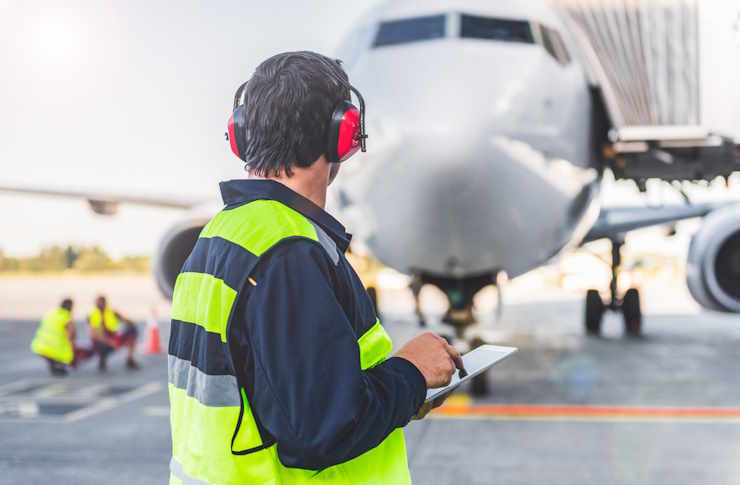Aviation Training Programs: Types, Requirements, and Career Paths
Aviation training opens doors to exciting careers in the sky, from commercial piloting to aircraft maintenance. Understanding the various programs, qualification requirements, training duration, costs, and career opportunities helps aspiring aviation professionals make informed decisions about their future in this dynamic industry.

What are the Different Types of Aviation Training Programs?
Aviation training encompasses several specialized programs designed to prepare individuals for various roles in the aviation industry. Private pilot training serves as the foundation, allowing students to fly small aircraft for personal use. Commercial pilot training builds upon this foundation, preparing pilots for airline careers or charter services. Instrument rating programs teach pilots to navigate using aircraft instruments rather than visual references, essential for flying in poor weather conditions.
Aircraft maintenance training programs prepare technicians to inspect, repair, and maintain aircraft systems. Air traffic control training develops the skills needed to guide aircraft safely through controlled airspace. Flight instructor certification allows experienced pilots to teach others, while airline transport pilot training represents the highest level of pilot certification.
Specialized programs include helicopter pilot training, drone operator certification, and aviation management courses. Each program focuses on specific skills and knowledge required for different aviation careers.
What Qualifications are Needed to Start Aviation Training?
Entry requirements vary depending on the specific aviation training program. For pilot training, candidates must be at least 17 years old for private pilot certification and 18 for commercial pilot training. A high school diploma or equivalent is typically required, along with the ability to read, speak, and understand English fluently.
Medical certification is mandatory for pilot training. The Federal Aviation Administration requires a medical certificate appropriate to the pilot certificate being sought. First-class medical certificates are required for airline transport pilots, while third-class certificates suffice for private pilots.
For aircraft maintenance training, candidates need a high school diploma with strong backgrounds in mathematics and science. Some programs prefer applicants with mechanical experience or technical education. Air traffic control training requires excellent communication skills, quick decision-making abilities, and the capacity to work under pressure.
Vision and hearing requirements apply to most aviation careers. Candidates must pass background checks and drug screenings before beginning training programs.
How Long Does it Take to Complete Aviation Training?
Training duration varies significantly based on the program type and intensity. Private pilot training typically requires 40-70 flight hours and can be completed in 3-6 months with consistent training. Commercial pilot training demands 250 flight hours minimum and usually takes 12-24 months to complete.
Airline transport pilot certification requires 1,500 flight hours, which can take several years to accumulate through various flying positions. Instrument rating training adds 2-4 months to pilot education, while flight instructor certification requires an additional 1-3 months.
Aircraft maintenance programs generally last 12-24 months for certification. Air traffic control training involves 10-18 months of classroom instruction and on-the-job training. Accelerated programs may reduce these timeframes, while part-time training extends completion periods.
Factors affecting training duration include weather conditions, aircraft availability, student aptitude, and training frequency. Full-time students typically progress faster than those training part-time while maintaining other commitments.
How Much Does Aviation Training Cost?
Aviation training represents a significant financial investment, with costs varying widely based on program type and location. Understanding these expenses helps prospective students plan their aviation education effectively.
| Training Program | Provider Examples | Cost Estimation |
|---|---|---|
| Private Pilot License | ATP Flight School, Embry-Riddle | $8,000 - $15,000 |
| Commercial Pilot Training | United Aviate Academy, CAE | $80,000 - $200,000 |
| Aircraft Maintenance | Aviation Institute of Maintenance | $15,000 - $40,000 |
| Air Traffic Control | FAA Academy, Community Colleges | $5,000 - $25,000 |
| Helicopter Training | Hillsboro Aero Academy | $15,000 - $25,000 |
Prices, rates, or cost estimates mentioned in this article are based on the latest available information but may change over time. Independent research is advised before making financial decisions.
Private pilot training costs include aircraft rental, instructor fees, ground school materials, and examination fees. Commercial training expenses encompass advanced aircraft time, simulator training, and multiple certification requirements. Additional costs include medical certificates, written exam fees, and equipment purchases.
Financing options include federal student loans for accredited programs, private education loans, and military benefits for veterans. Some airlines offer sponsored training programs with employment commitments.
What Career Opportunities are Available After Completing Aviation Training?
Completed aviation training opens numerous career paths across the aviation industry. Commercial airline pilots represent the most visible career option, flying passengers and cargo worldwide. Regional airlines often serve as stepping stones to major carriers, providing valuable experience and flight hours.
Corporate aviation offers pilots opportunities to fly business jets for private companies or charter services. Flight instruction provides steady employment while building flight experience. Agricultural aviation involves specialized flying for crop dusting and aerial application services.
Aircraft maintenance technicians work for airlines, repair stations, or aircraft manufacturers. Opportunities exist in commercial aviation, general aviation, and military contract work. Specialized roles include avionics technicians focusing on electronic systems and inspection specialists ensuring aircraft safety compliance.
Air traffic controllers work at airports, approach control facilities, and en route centers. Career advancement leads to supervisory positions and facility management roles. Aviation management positions exist throughout the industry, from airport operations to airline administration.
Emerging fields include drone operations for commercial applications, aerospace engineering support roles, and aviation safety inspection positions. The growing aviation industry continues creating new opportunities for trained professionals.
Aviation training provides the foundation for rewarding careers in a dynamic industry. Success requires dedication, continuous learning, and adaptability to evolving technology and regulations. The investment in quality training pays dividends through diverse career opportunities and professional growth potential in aviation’s expanding landscape.






